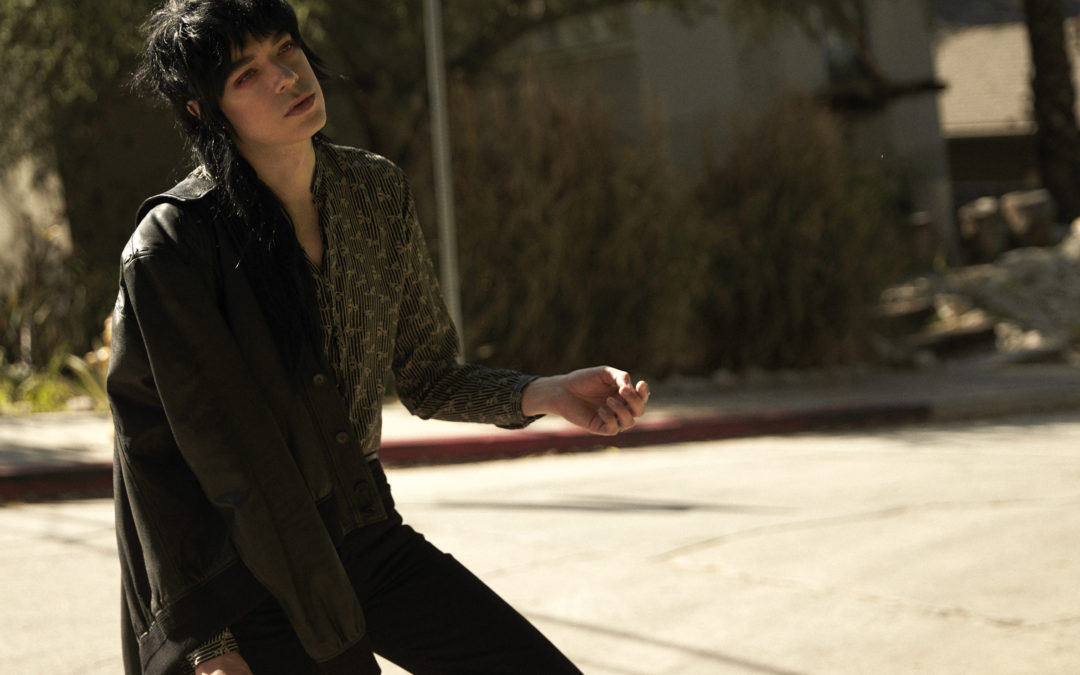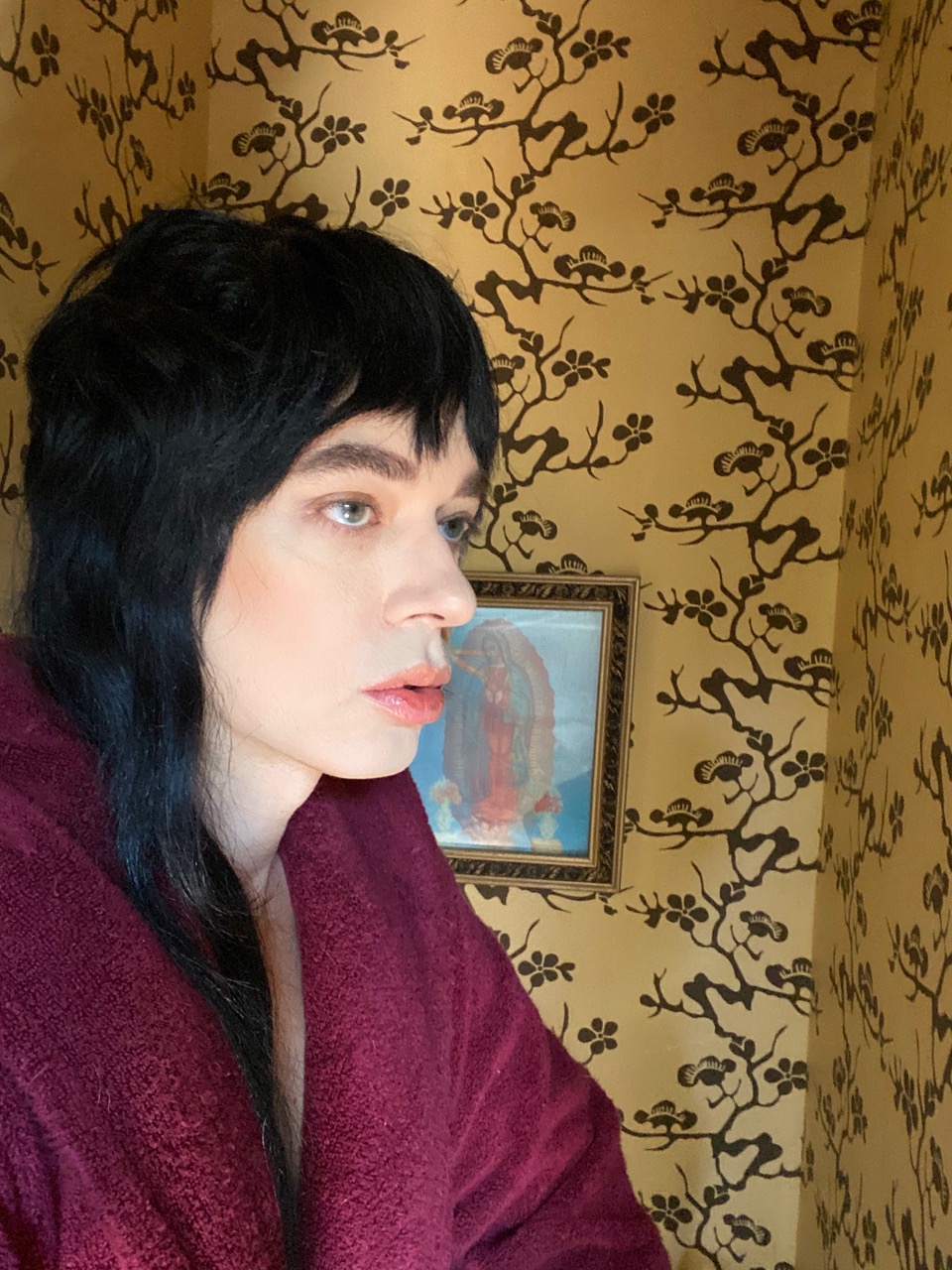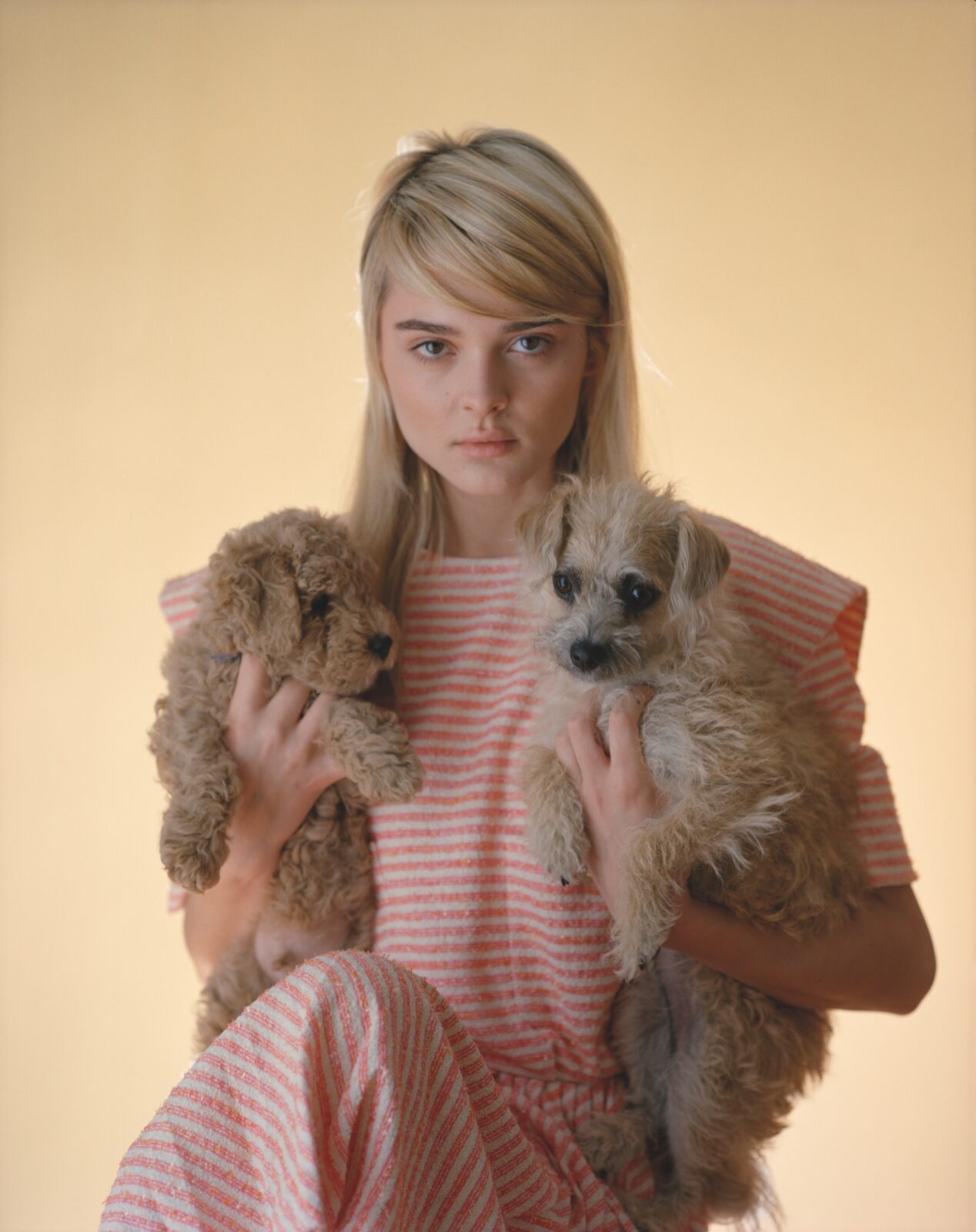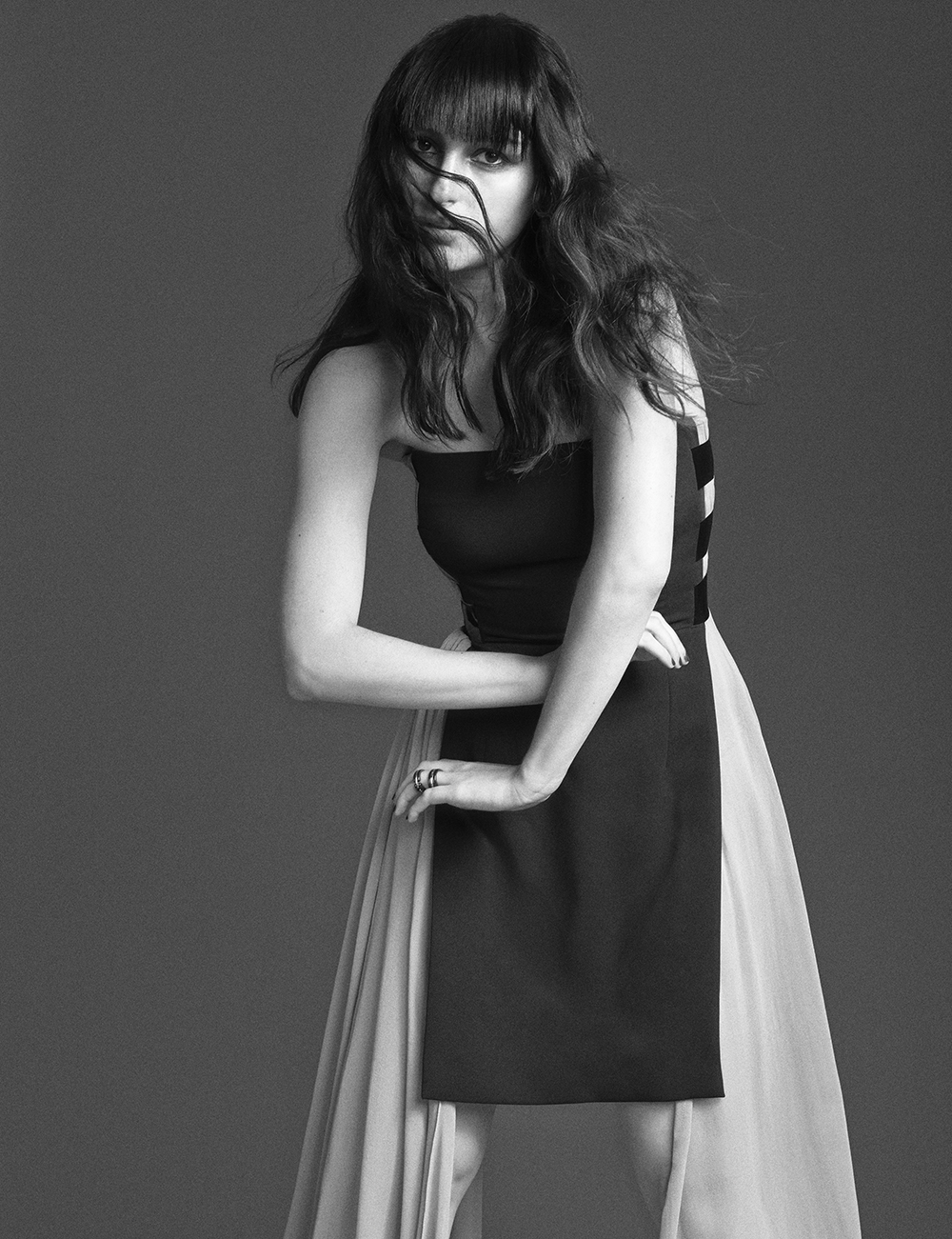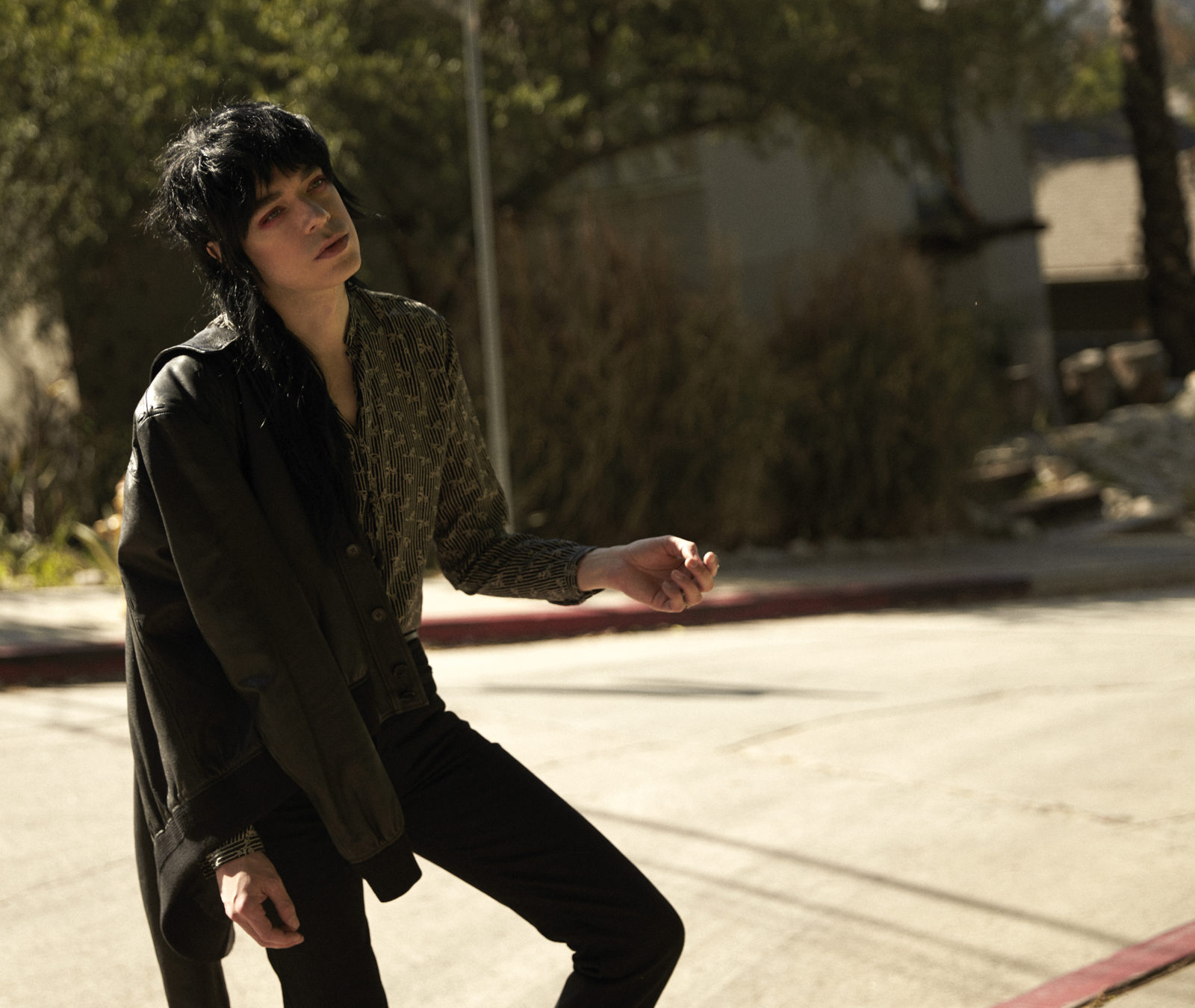
Saint Laurent by Anthony Vaccarello - shirt in silk, pants in denim, jacket in leather with lacing
A MEETING WITH LAWRENCE ROTHMAN
By Alice Butterlin
With a rotating cast of nine alter egos appearing from one video to the next, Lawrence Rothman is virtually impossible for new listeners to pin down. What’s more, the musician names, performs, and embodies each of these characters with an actor’s knack for shapeshifting. Darrel Bitchboy, Orion, Truman, Hooky, Aleister, Nantucket, Kevin, Elizabeth, and Christopher each represent a different facet of the American artist’s plural personality. But there is no stylistic gimmick here: these transformations represent a manifesto in an era marked by blurred gender lines and redefined boundaries between male and female. After recently coming out as genderfluid, Lawrence Rothman aims to amplify the voice of those living outside society’s norms. We met with the artist to learn more about their unique background, first album, and impressive list of collaborations.
Your new album just came out. What was the concept behind it?
It was basically me having lyrics and coming from a place that was super raw. Almost like an open-journal with no barrier, which I’ve never done before. I’ve never written as transparently. It explores the experiences I’ve gone through, dealing with gender fluidity and people in my family not being open to that. Where I’m from, in Missouri, I had trouble existing. I wanted to address it in my lyrics, tell my story. I thought possibly, somebody else was feeling the same way and would benefit from my experiences. I didn’t feel okay when I was going through it, discovering it for the first time.
It was an autobiographical album from start to finish?
Yes, exactly. It was really a first for me. I used to write about other people or experiences that I saw from afar, about friends. Occasionally I’ve been autobiographical but this time I wanted every song to be true to my feelings. The producer, Justin Raisen, really pushed me in that direction. He told me I had to tell my story. In the beginning, I wasn’t going to produce those kinds of songs, but then I rewrote all the lyrics.
Do you feel like people have been receptive to your story?
Definitely. I’ve met a lot of people that have gone through the same thing or are going through it. They’re all different ages as well, some are very young and some are older. I feel like I’m part of opening up this conversation. It’s ok to feel like you’re kind of somewhere in the middle of gender, it’s not bad nor weird. It’s just reality. Of course, there are a lot of people who don’t understand. I put my blinders on and try to not get too focused on negativity.
Gender fluidity has become more widely known to the public, which is a good thing but also generates more hate from anonymous Internet users. What is your take on that?
I feel like, even three years ago, the subject wasn’t as open and identified in a broad spectrum. Androgyny and gender fluidity has been going on since the beginning of time so it’s weird that people still think it’s not right. Online you get a lot of weird troll people saying negative shit. My opinion is that if you’re going to say anything, let’s go meet in person. Don’t hide behind your laptop. I’m all for freedom of speech but if it’s done cowardly, what’s the point?
Growing up, did you have certain musicians that you could relate to?
Prince was a big one for me. I felt like he blurred the line, how he looked and dressed… He felt very gender fluid even though he never identified as that. When I looked at him I felt like I could relate to that imagery. Even somebody like Kurt Cobain, who wore dresses and played the guitar at the same time, was an inspiration to me. When I was growing up, until I got to a certain age, I’d turn on MTV, back when they played music videos in the 90s and thought: “Oh, wow there’s Kurt Cobain wearing a dress!” Being so little and watching that, you think there’s nothing wrong. Then all of a sudden, you get to high school and people are wondering what the hell you’re doing. That’s when the trouble starts, especially if you’re from the Midwest where it’s super closed-minded.
Even heavy-metal bands like Kiss or Steel Panther were the epitome of masculinity, but were still very androgynous.
Even Little Richard! Whenever I would see Annie Lennox, I also felt like she was blurring the line. It’s nothing new, it’s just that now it has more of an explanation to it, so I guess it feels shocking to people who are closed-minded.
You collaborated with many amazing artists on your album. But for me, Marissa Nadler seemed like a match made in heaven! How did that come about?
I’m a big fan of her music and my producer Justin Raisen reached out to her. We had never met but she was into the idea of coming to the studio and hanging out with us. When she was in L.A, she came by and we had a good time just talking about music. Then she got on the mic and started singing and one thing led to another! It was amazing. Justin Raisen and I produced a song that has John Cale from the Velvet Underground and Marissa’s vocals. We’ve become good friends since.
You’ve managed to bring together very well-known, established artists with more underground acts. For a first album, it’s amazing that you got to work with such legendary artists like Kim Gordon.
Justin was just really good at reaching out to people and showing them the music. I like the idea of bringing different types of musicians together that normally wouldn’t meet.
I feel like you’ve put a lot of effort in offering beautifully-made music videos. Are visuals as important as the music?
Yes. I’ll write a song and it will be done, but while I’m writing it certain images will come to me, which I’ll jot down in a notebook. When I’m singing my vocal tapes, I’ll start daydreaming about things that get me in the mood. I like when ideas come to life. I feel like, in this day and age, music and visuals are intertwined. It creates excitement. I just did a show in Los Angeles where I brought some of the scenes in my music videos to life. Everything was actually happening on stage. I like creating little worlds like that. I like going to visual concerts, not just some guy playing the guitar.
What kind of imagery inspires you?
I like Fellini, Stanley Kubrick, David Lynch, Cronenberg… I love film a lot. I’ll put films on in the studio while we’re working, just playing in the background. There’s something about film that sets the mood of a whole room, just like music can.
Do you listen to a lot of movie soundtracks?
Yes, I love soundtracks! Clockwork Orange‘s soundtrack is one of my favorites. I would love to dabble in movie soundtracks one day. For my own pleasure I create a lot of sonic beds, kind of like Brian Eno’s ambient music. I’ll do some with keyboards and some with guitars. It would be great to attach them to actual film pieces. I play with loops all the time, I just haven’t had an outlet to showcase it, other than during the live shows in between songs.
You have showcased nine different versions of you, or alter egos, to accompany this first album. Is it something that followed you all your life or is it a new concept?
My mother’s a real free spirit. My whole life, she was always naming different moods I was in. If I was being mean or rude one day, she’d call me Aleister. I would always change my mind about my hair and my clothes and my mother always supported those decisions. She told me if I wanted to shave my head or dye my hair red I could. So I continued naming these different versions of myself in my teen years, so when the time came to release some music I thought I’d be exactly who I am to my family publicly. I wanted to have fun with it. I feel like everybody’s got versions of themselves. You show one person one side of you and another person the other side. I want to wear all my personalities on my sleeve. All the alters were created through the years, then I finally found the nine principal ones that most represent me. Everyone has multiple facets, it’s just a matter of how you define it. Some people are more expressive than others.
Is there one alter ego that represents you the most?
They all do because they’re all my different moods.
Your music is very 80s infused, what is so musically appealing to you in that era?
I think on this particular album it was a happy weird accident that it sounds like that, because I don’t have a lot of 80s references. I like the Cure but who doesn’t? I like Morrissey as well. That’s about it. I think because of my vocals and the synths it has that 80s vibe. People told me it sounded like Roxy Music or Bryan Ferry and I’m like, “Ok, cool.” I’m not very familiar with 80s music because I mostly listen to 90s bands or stuff that’s much older like Marvin Gaye. Really old soul music. I’ve talked to a lot of people who get the 80s comparison sometimes, and most of the time they have no idea why.
Today, everything tends towards minimalism or even normcore, yet you seem to be attached to a more baroque aesthetic.
I don’t ever listen to new music, unless I create playlists of stuff I like. I’m not really following where it fits. I genre hop myself all the time. When I’m creating playlists on Spotify, I’m always hopping from genre to genre, a bit all over the place. I just do whatever I like. I like things that have a sort of emotional pain, it could be in the strings or organs. I also like minimal music. I don’t force myself to do anything that doesn’t come naturally.
How did the recording process go for this first album?
I micromanage everything. (laughs) So I engineered the whole project and mixed it. I recorded every single instrument. I wanted to do the rhythm tracks first, so the bass, the drums, the guitar, and the piano. We would get different musicians together, all in the room, and then I’d mic it all up and get my tape machines. I have a bunch of vintage tape machines. A few were owned by Steve Albini, I bought them off of him. So I get them all going and run into the room and we all play takes. Then we layer stuff on top of that. That was the most fun part of the whole project, just feeling the energy of everybody. I really liked going into the control room, getting the tape ready and running back! (laughs)
You used to play in the punk band The Living Things a long time ago. What made you want to go solo and make pop music?
Since it was a band, we were all involved equally in the project. The music was a reflection of all four of us. I was never a big fan of rock music, I just sort of fell into that. I always look at things as a snapshot of time and that really represented a specific moment in my life. My personal taste is much more pop, a bit weird and experimental. I like the career of Scott Walker. He’s a very interesting guy, he actually influenced David Bowie a lot. You have to listen to his song “Duchess.” He always made pop music but with experimental elements. Kind of like the Talking Heads where it’s kind of pop but still strange. That’s what I like, much more than punk music.
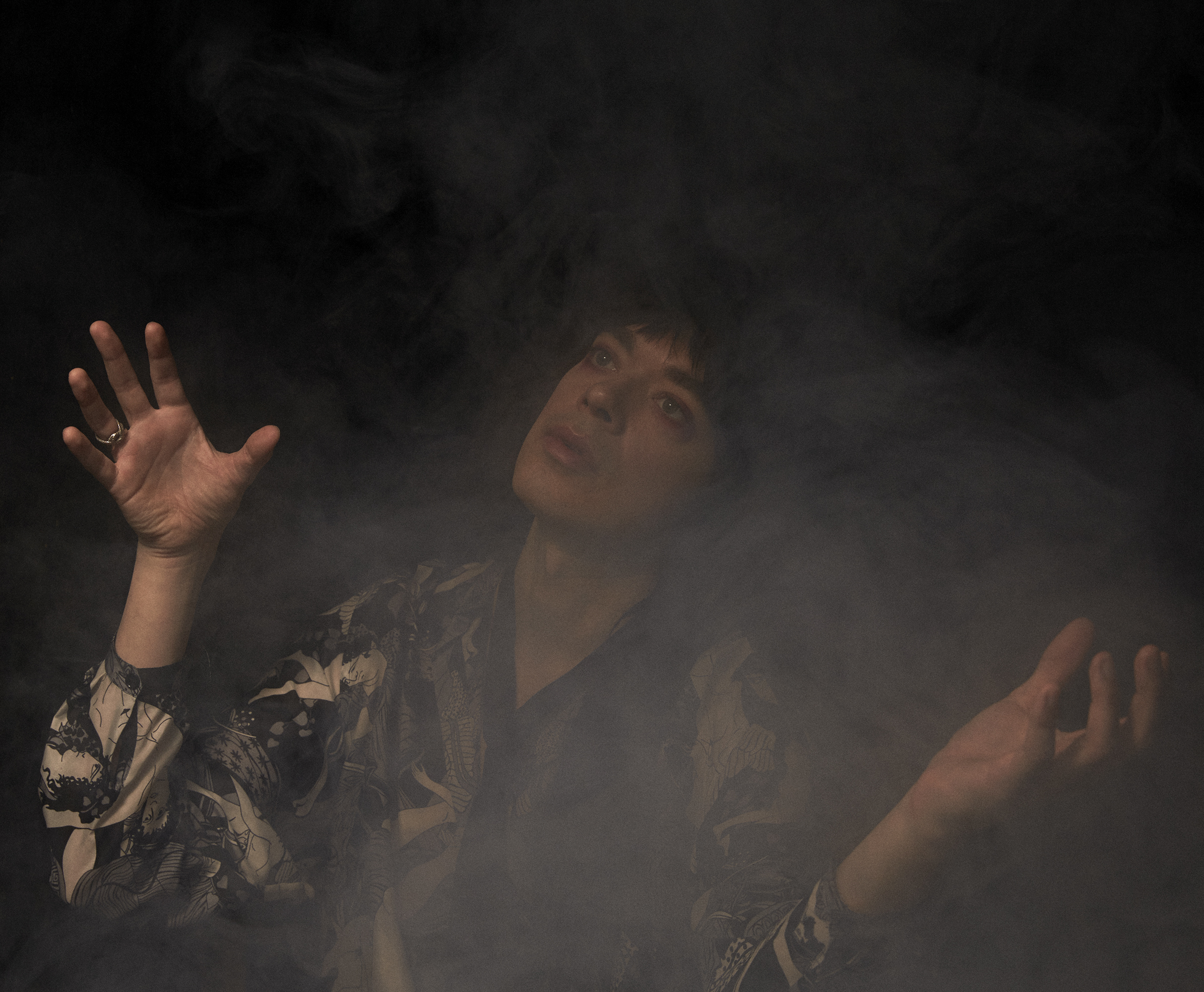
Saint Laurent by Anthony Vaccarello – silk shirt, silk tie, Lawrence’s own ring
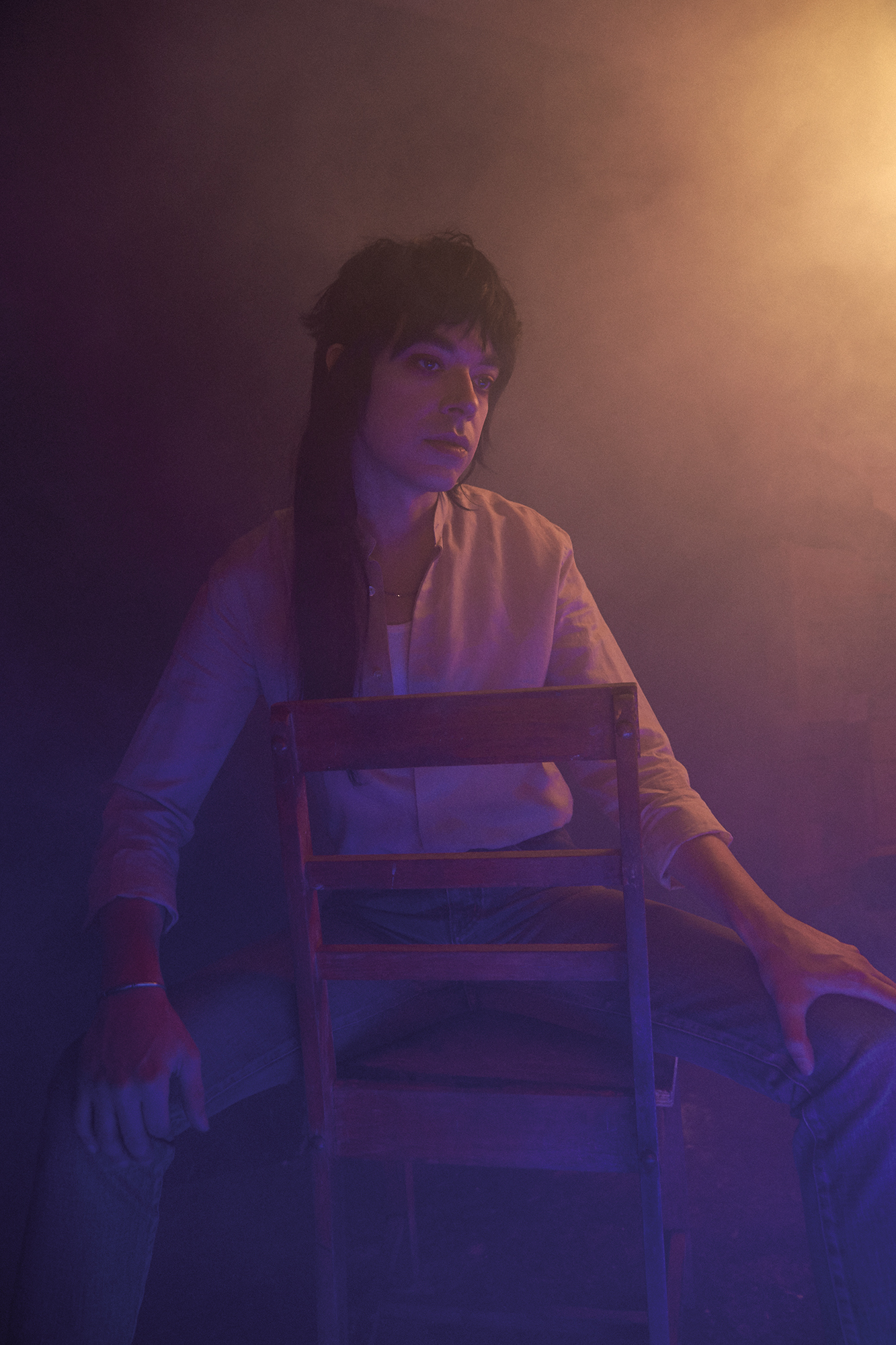
Saint Laurent by Anthony Vaccarello – tank top in cotton, silk shirts, skinny jean in denim, bracelet jonc Berbère Marrakech in brass silver, stylist’s own necklace
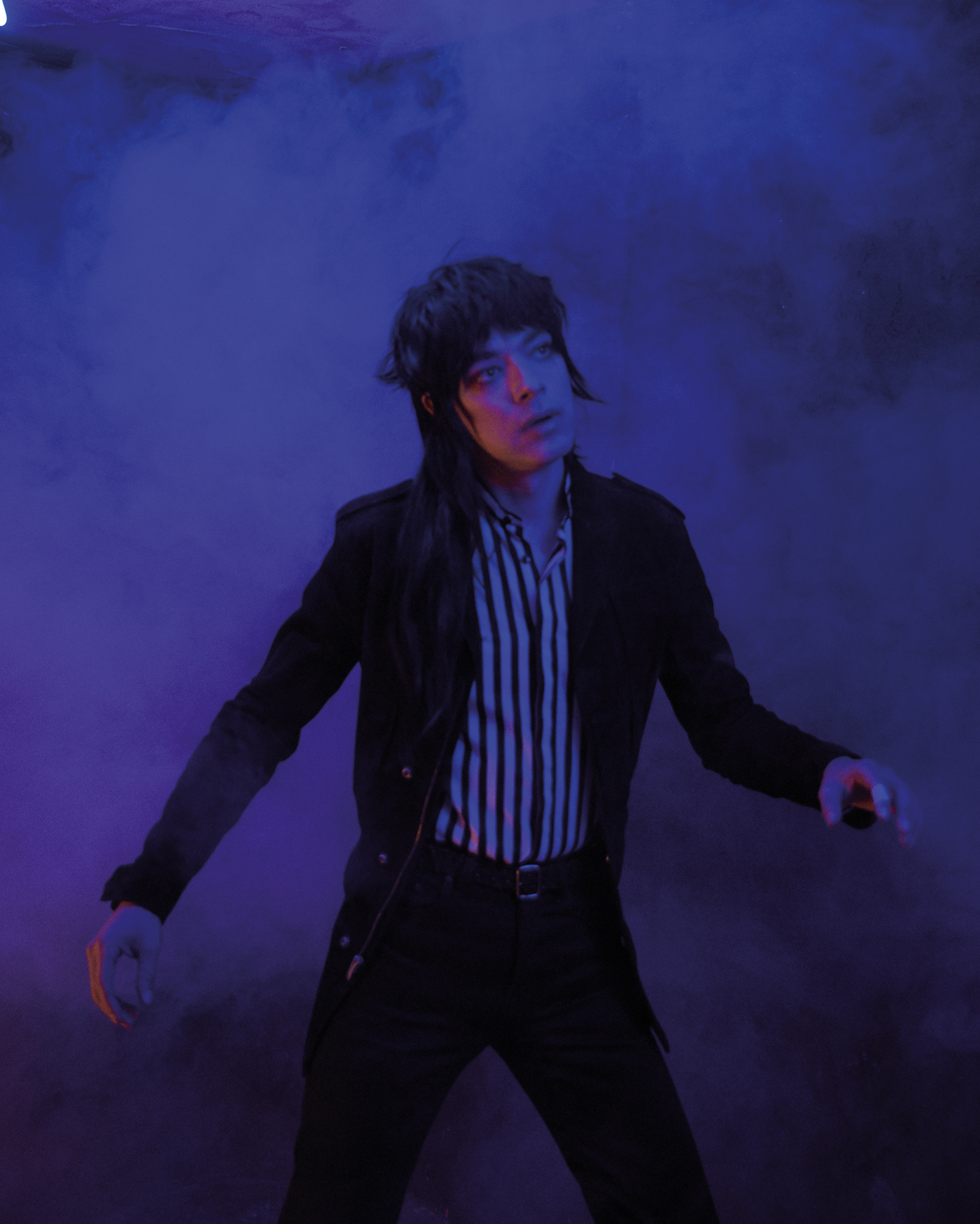
Saint Laurent by Anthony Vaccarello – shirt in cotton voile, pants in denim, saharienne jacket in suede, belt in leather







